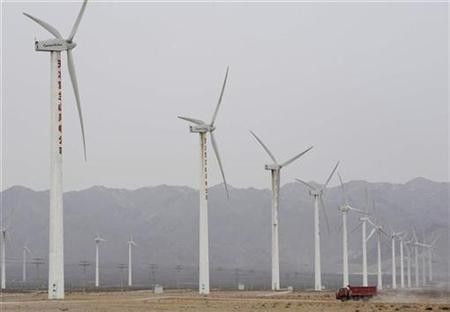China puts hard target on energy use -Xinhua

China's plan for the next five years will put a hard target on overall energy use, capping consumption at 4 billion tonnes of coal equivalent (TCE) by 2015, Xinhua news agency quoted the country's former energy chief Zhang Guobao as saying on Friday.
Zhang, who retired earlier this year as head of the National Energy Administration, said the energy cap would be a mandatory ceiling in China's 12th five-year plan.
Experts had been expecting a mandatory energy consumption cap to appear in the plan, but said the critical issue was whether or not the figure would be made public.
To have an absolute energy target -- everyone knows that's mainly a coal consumption target -- is already a very big step forward, said Ailun Yang, China campaign manager with Greenpeace.
China's energy use was 3.25 billion tonnes of coal equivalent in 2010, up 5.9 percent year on year, government data showed. It was expected to rise by 4.24 percent annually in 2011-2015, Zhang said.
China aims to reduce 2005 levels of carbon intensity -- the amount of carbon dioxide produced per unit of gross domestic product -- by 40-45 percent by 2020, and a target for the 2011-2015 period is also expected to be included in the new five-year plan.
Premier Wen Jiabao said last weekend that China would cut energy and carbon intensity by 16-17 percent over the period. [ID:nTOE71Q00N]
Wen did not make a distinction between the two targets, but experts suggest energy intensity would need to fall 20 percent if China was to achieve a 18 percent carbon intensity reduction.
Zhang said the amount of energy produced per unit of economic growth dropped 19.1 percent over the 2006-2010 period, falling short of a target of 20 percent.
He also said China would aim to raise the share of non-fossil fuel energy to 11.4 percent of total primary energy use by the end of 2015, a mandatory target that would put the country on course to meet its 2020 target of 15 percent.
Non-fossil fuel energy currently accounts for 8 percent of China's total energy consumption.
© Copyright Thomson Reuters 2024. All rights reserved.





















